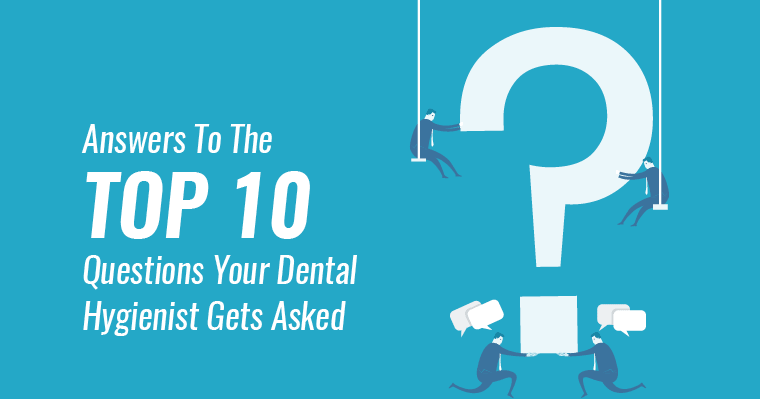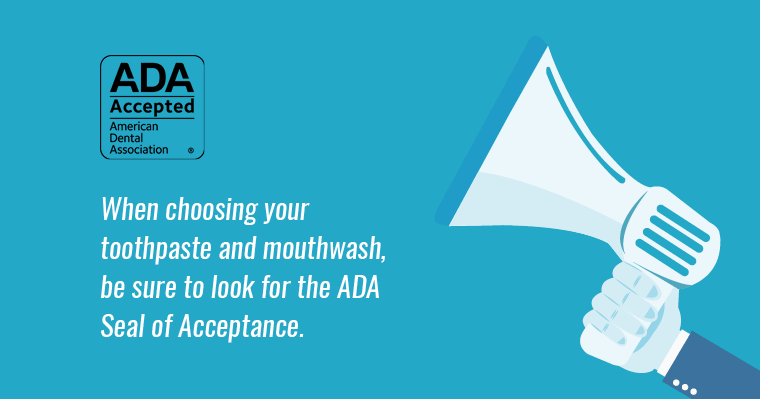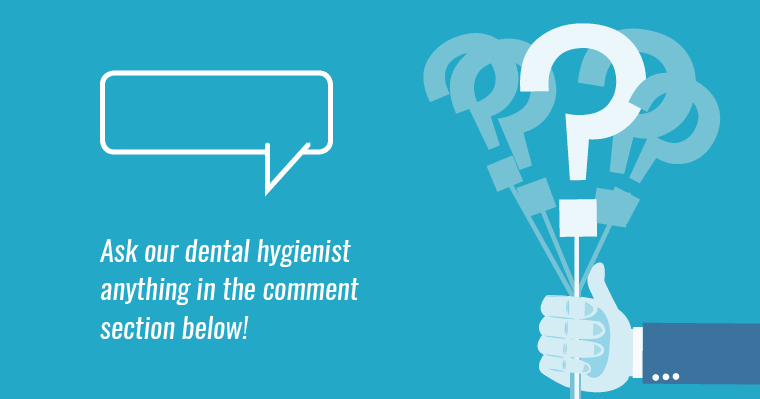National Dental Hygiene Month: Ask Your Dental Hygienist Anything

Did you know dental hygienists are your number one smile fans? It’s true! They are your front line of defense to catch any issues with your smile before they become bigger problems. Since hygienists are a critical part of the dental office and October is National Dental Hygiene Month, we’re going to answer the top 10 questions hygienists often hear from patients.
You’ll learn:
- The secrets of how to brush and floss your teeth properly
- How to spot the signs of gum disease
- If yellow teeth are a sign of a bigger problem
Don’t see an answer to your question? Leave a comment below and our hygienists will do their best to answer your question.
Top 10 Dental Hygiene Questions as Told by Your Hygienist
1) How do you properly brush your teeth?
According to the American Dental Association, a soft-bristled toothbrush should be used to properly brush your teeth.
From there:
- Place the brush at a 45-degree angle to the gums.
- Gently move the toothbrush in short (tooth wide) circular, back-and-forth motions.
- Be sure to brush all areas of the tooth and gums: outer surfaces, inner surfaces, and chewing surfaces.
- To brush the inner surfaces, tilt the brush vertically and make up-and-down strokes.
- Be sure to do this for two minutes.
- Brush your tongue to remove harmful bacteria and have fresh breath.
Remember, always switch out your toothbrush every 3-4 months to keep your teeth healthy.
2) Is it important to floss? Why?
Yes! It’s very important to floss. Brushing your teeth only cleans 60% of your mouth. Flossing takes care of the other 40%. Think about it: You wouldn’t wash 60% of your hair or clean 60% of your body; it’s the same with your teeth.
What happens if you don’t floss? You’d be at risk for two major dental diseases: gum disease and cavities, which will lead to tooth loss. In fact, studies have shown gum disease and health ailments (heart disease, diabetes, stroke, etc.) are directly related. If you don’t take care of your teeth, you’re putting your entire body and health at risk.
3) How do I floss properly?
- Take 12-16 inches of floss and wrap each end around your middle fingers.
- Be sure to leave about 2-3 inches of floss between the hands.
- Gently insert the floss between the teeth, using a sawing motion.
- Curve the floss around each tooth – a “C” shape.
- Gently move the floss up and down under the gum line, cleaning the side of each tooth.
4) How often should I brush and floss?
Always, ALWAYS brush your teeth twice a day and floss once a day. It’s recommended to perform these daily rituals in the morning and before bedtime.
5) What is better: Electric or manual toothbrush?
Both electric and manual toothbrushes can effectively and thoroughly clean teeth. Manual toothbrushes are effective if used properly. Many people who have difficulty using a manual toothbrush prefer using the electric toothbrush. Talk to your dentist to decide which type of brush works best for you!

6) Which toothpaste should I use?
When shopping for toothpaste, look for fluoride as an ingredient. Fluoride helps prevent tooth decay and having it in your toothpaste gives your smile a fighting chance every day.
A tip: Look for toothpaste with the ADA Seal of Acceptance. These kinds of toothpaste are approved by the American Dental Association through scientific evidence demonstrating their safety and ability to prevent tooth decay, gingivitis, and tartar buildup.
When in doubt, go with the ADA Seal – your smile will thank you.
7) How can I get rid of bad breath?
There are multiple ways to get rid of bad breath:
- Practice good oral hygiene by brushing twice a day with ADA approved toothpaste, flossing daily, and brushing the tongue.
- Stop smoking and chewing tobacco.
- Drink water frequently.
- Use mouthwash (look for mouthwash with the ADA Seal of Acceptance).
8) What are the signs of periodontal (gum) disease?
Many people don’t know they have periodontal disease because the symptoms are “silent” and painless in the early stages. Signs of periodontal disease include:
- Red, puffy, and bleeding gums.
- Receding gums.
- Gaps between teeth.
- Loose teeth.
- Constant bad breath.
If not treated, gum disease could worsen leading to tooth loss. Catching the early signs of periodontal disease is important to save your natural smile, and visiting your dentist regularly will help stop gum disease in its tracks.
9) How often should I visit the dentist?
It is recommended to visit our office for a check up and hygiene appointment every six months. This allows us to check for small issues before they become bigger problems. Additionally, our hygiene team can get rid of calculus or tartar buildup, which can’t be removed from a toothbrush.
Not all smiles are created equal, so if you’re more prone to cavities or gum disease, you may need to see the dentist every 3-4 months. Ask your dentist to see what’s the best option for you.
10) Why do teeth turn yellow? Should I worry?
Stained teeth are usually caused by aging, food, drinks (coffee, tea, red wine, etc.), and smoking. It’s a part of life for teeth to change color, but there is a way to reverse discoloration with professional teeth whitening.
Teeth whitening is safe and effective to brighten those pearly whites. Talk to your dental team about this conservative dental service at your next check up!

Don’t Forget to Schedule Your Dental Hygiene Appointment
A healthy smile speaks volumes with your oral and overall health. If you’re in need of a dental cleaning, call our office today!
In honor of Dental Hygiene Month, our hygienists will answer any other additional questions you may have. Leave your question in the comments below!
The content on this blog is not intended to be a substitute for professional medical advice, diagnosis, or treatment. Always seek the advice of qualified health providers with questions you may have regarding medical conditions.


Comments are closed.